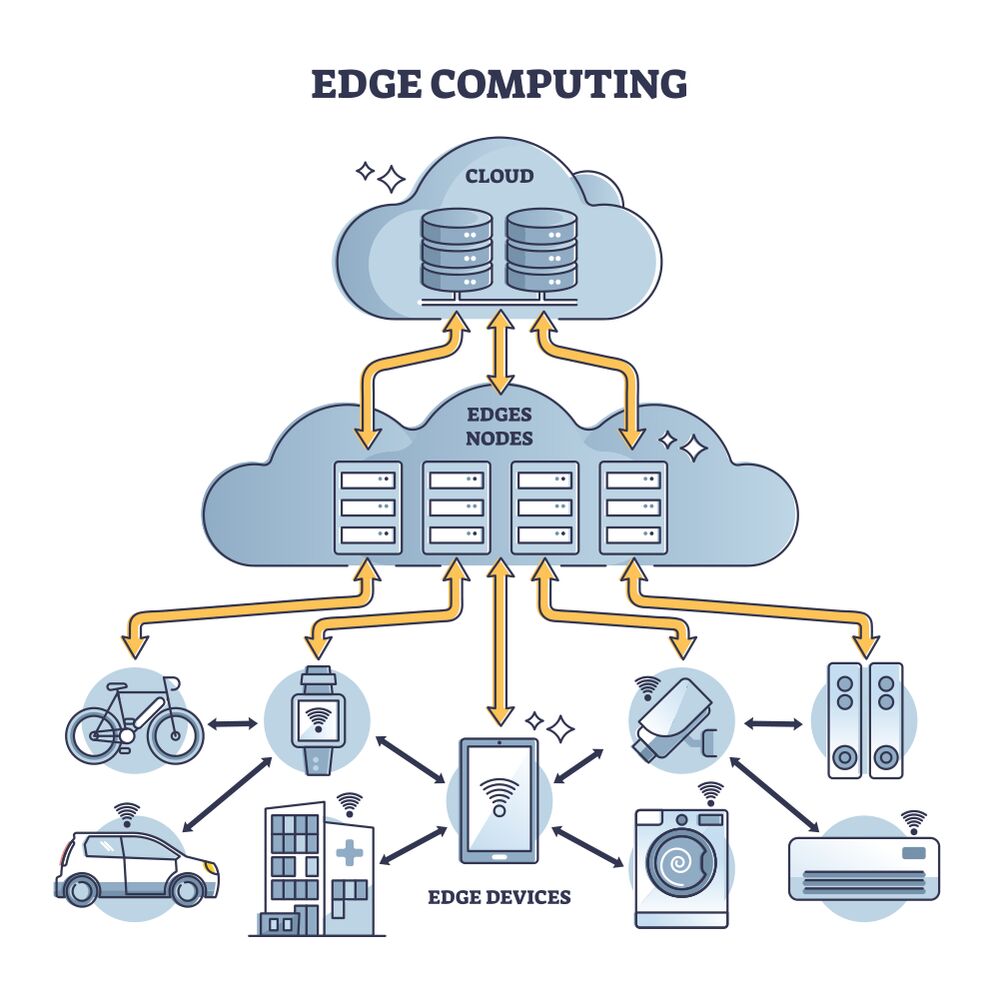Source : Mouser Electronics
Engineering the Future of Ambient Homes
In the early 1990s, computer scientist Mark Weiser imagined a future of ubiquitous computing, where technology would disappear into the background of daily life.[1] Despite advances in smart home components, sensor networks, and intelligent devices, this concept—later termed ambient computing—remains an elusive goal. We now have the hardware and the connectivity. So, what’s the real bottleneck?
This article explores the technical and human-centered challenges that prevent ambient computing from disappearing into the background and what engineers must do to make that vision a reality.
The Engineering Backbone of Ambient Computing
The appeal of Weiser’s vision is evident: technology that quietly works in the background, making life easier. But turning that vision into reality is not simple. It takes a mix of engineering expertise, and every discipline brings its own set of challenges. The following sections examine what it takes to make ambient computing work and the remaining challenges.
Sensors: Giving Spaces a Sense of Awareness
At the heart of ambient computing are sensors—the “nerves” of the system that allow environments to perceive events around them. These devices can detect motion, temperature, light, sound, air quality, and more. For example, in a smart home, sensors might detect a person entering a room, instructing the system to adjust the lighting or climate accordingly.
Accuracy and reliability are key when designing these sensing systems. Sensors must be sensitive enough to distinguish between a person and a pet or to detect subtle environmental changes. The challenge is to make these digital senses as seamless and trustworthy as our own.
Power Efficiency: The Art of Staying Always On
For ambient computing to truly disappear into our surroundings, its devices must be “always on” and ready to respond at any moment. This creates a significant engineering challenge: keeping devices running continuously without frequent battery changes or excessive energy use.
To address this, engineers can incorporate strategies such as designing ultra-low-power electronics and exploring energy-harvesting methods, including solar, kinetic, and thermal power. In some cases, like new construction, devices can be hardwired into a building’s electrical system for reliability.[2] But in many existing homes, battery power remains the most practical option, even if it means balancing performance with the need to conserve energy.
Natural Interfaces: Making Technology Feel Human
One of the defining features of ambient computing is the shift away from screens and keyboards toward more natural ways of interacting, like speaking, gestures, or simply moving through a space. Voice assistants, for example, let users control environments simply by speaking, while gesture recognition enables touchless control of lights or appliances.
Building these interfaces requires sophisticated hardware and software to interpret human behavior accurately and contextually. The challenge is making these interactions feel intuitive and reliable so users don’t have to think about the technology at all. When implemented correctly, these systems can make technology feel more like a helpful companion than a tool that must be managed.
Edge Intelligence: Smarts at the Source
To keep experiences fast, private, and reliable, much of the processing in ambient computing happens on the device itself, which is called edge computing. Instead of sending every bit of data to the cloud, devices are increasingly equipped with enough processing power to analyze information and make decisions locally (Figure 1).

Figure 1: Edge devices connect to edge nodes and the cloud, enabling fast, local processing for smart environments. (Source: VectorMine/stock.adobe.com)
This approach reduces delays, protects privacy, and keeps devices working even when the internet is unavailable. However, fitting advanced intelligence into small, energy-efficient devices is no easy feat. It requires clever engineering to balance computational demands with the realities of power, space, and cost.
Interoperability: Weaving a Cohesive Fabric
One of the most significant barriers to true ambient computing in the home is the lack of seamless communication between devices from different manufacturers. While the vision is for all smart devices—lights, thermostats, sensors, and appliances—to work together effortlessly, the reality is far more fragmented.
This fragmentation stems from incompatibility among the various communication protocols (such as Wi-Fi, Bluetooth®, Zigbee®, Z-Wave, and Matter) and multiple proprietary standards. For example, a smart speaker may control only certain brands of lights or thermostats, forcing users to juggle multiple apps or hubs.
Even when devices are technically compatible, privacy and security concerns can arise when systems need to share information, potentially exposing vulnerabilities if not properly managed. However, industry efforts like the Matter standard are beginning to address these issues by promoting a unified approach to device communication and data sharing.
AR, VR, and MR in the Ambient Home
Ambient computing in the home now goes far beyond adjusting lights or thermostats. The new generation of systems aims to create adaptive, context-aware environments that seamlessly blend digital and physical experiences. An emerging frontier is the integration of augmented reality (AR), virtual reality (VR), and mixed reality (MR) technologies, which are being applied to practical uses, such as maintenance reminders, virtual instructions, and smart glasses that recognize the user’s location to offer relevant controls or information.
In these scenarios, ambient computing links sensors, spatial data, and user behavior to go beyond device detection and interpret intent. The result is smoother interaction between people and their environments, both digital and physical. Engineers must ensure these experiences are seamless, secure, and enhance daily life rather than complicate it.
Human Factors and Adoption Challenges
Ambient computing’s success depends as much on human acceptance as on technical achievement. The promise of seamless, context-aware environments is compelling but raises human-centered challenges that engineers and designers must address for widespread adoption.
Trust and Agency
When systems act independently without clear prompts, users can feel a loss of control. Ambient systems often make decisions or take actions without explicit commands, leading to discomfort or skepticism, especially if the reasoning behind those actions is not transparent.
Users need to understand what the system is doing and why, and they need clear, accessible ways to override or adjust automated behaviors. Too much automation can also erode human skills and independence, so engineers must strike a careful balance between convenience and control.[3]
Accessibility and Inclusiveness
If technology is tested on only a small group of people, it can leave out those with disabilities, people from different backgrounds, or anyone who isn’t tech-savvy. Accessibility is more than just ticking boxes or adding features: It’s about creating an inclusive environment and ensuring that real people with diverse needs and experiences can comfortably use the technology.
By gathering feedback from a wide range of users, designers are more likely to incorporate different ways to interact, such as voice, touch, or even gestures, so everyone can find what works for them, regardless of their age, ability, or culture. The goal is always tech that works for everyone from the start.
Reliability and Dependence
As homes become more dependent on ambient systems, the stakes for reliability rise. A single device or network failure can cause a domino effect through interconnected systems, disrupting daily life or even safety-critical functions. Building in redundancy, fail-safes, and manual overrides is vital to maintaining user confidence.
Privacy and Data Security
One of the biggest reasons people hesitate to adopt ambient computing is concern over privacy and data security. With always-on sensors, microphones, and cameras, it’s natural to wonder who will see these data, how they will be used, and how long they will be viable.
To build trust, strong security needs to be part of the design from the beginning:
Collect only what is needed. Avoid collecting unnecessary data and anonymize it whenever possible.
Be upfront about data use. Let people know what is being collected, who is collecting it, and why. Give them control over their information.
Protect data everywhere. Use encryption and strict access controls, whether data are moved or stored.
Follow the rules. Ensure the system complies with all relevant legal and ethical standards regarding privacy and user rights.
When privacy is built in from the start, users can feel confident that their homes and personal data are safe.
Public Perception and Gradual Adoption
Widespread acceptance of ambient computing will depend on directly addressing these human factors. Gradual exposure, user-centered design, and open communication about benefits and risks can help smooth the path to adoption and build the trust necessary for ambient systems to become a natural part of everyday life.
The path forward for ambient computing entails not just technical innovation but also embedding human values like trust, privacy, inclusiveness, and control into every layer of design and deployment. Only by doing so can these systems empower, rather than alienate, the people they are meant to serve.
The Path to Truly Smart Homes
Computing is already reshaping homes, whether it’s asking a smart voice assistant to dim the lights, using smart devices that monitor air quality, or installing shades that lower and rise with the sun. Even though today’s sensor systems and devices face some integration and reliability challenges, the long-term goal is clear: Embed smart controls into a home’s infrastructure and power them with the grid, much like Weiser envisioned.
For engineers, the real opportunity lies in designing integrated, reliable, and truly invisible systems. As we move from gadgets to embedded intelligence, each project brings us closer to homes that are smarter, simpler, and more attuned to people’s needs, laying the foundation for technology that enhances life without drawing our attention away from it.
To learn more, visit www.mouser.com











